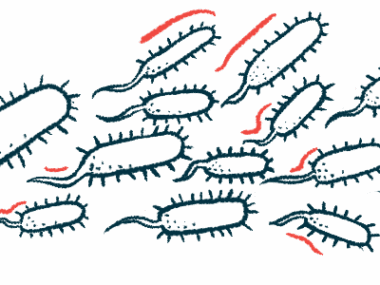Severe Recurrent Abdominal Pain Leads to HAE Type 1 Diagnosis: Case
Upper abdomen pain was only symptom for woman, 64, report says
Written by |

A 64-year-old woman in Japan was diagnosed with hereditary angioedema (HAE) type 1 after being hospitalized with severe recurrent epigastric pain — pain in the upper abdomen, in the area below the ribs.
Researchers said this case highlights the need to consider the possibility of angioedema as a diagnosis in people with recurring and acute abdominal pain.
“Practitioners may not associate abdominal pain with HAE in middle-aged patients because HAE is mostly diagnosed in young adults. However, HAE should be considered a differential diagnosis, even in middle-aged patients, if they present with recurrent abdominal pain,” the team wrote.
Here, laboratory tests showed low levels of C1-inhibitor (C1-INH) protein — characteristic of HAE type 1 — and imaging revealed duodenal wall thickening and swelling, or edema. The duodenum is the first part of the small intestine. In addition, the patient and her father had a history of frequent swelling of the lips and face.
“Our patient was promptly diagnosed with duodenal edema-related HAE based on endoscopic findings and a thorough history-taking,” the researchers wrote.
An unusual case of HAE type 1
The woman’s diagnosis was detailed in a study titled “A Case of Duodenal Edema-related Undiagnosed Hereditary Angioedema,” published in the journal Internal Medicine.
Angioedema is commonly identified by swelling. The disease symptoms often are restricted to the skin, but the condition also can affect the membranes that line the respiratory and gastrointestinal tract. In such cases, patients may experience breathing issues and vomiting or abdominal pain.
HAE is a rare form of angioedema caused by genetic mutations inherited from a biological parent. HAE types 1 and 2 are caused by mutations in the SERPING1 gene, which carries information for C1-INH production.
C1-INH blocks the activity of two other proteins, promoters of the production of bradykinin — a peptide that regulates blood pressure and inflammation. In HAE type 1, C1-INH levels are low, while in type 2 they are normal or elevated, but the protein activity is reduced. Thus, bradykinin is overproduced in both conditions, leading to swelling attacks.
Now, researchers from the Konan Medical Center, in Japan, reported the case of an older woman admitted to the hospital with recurrent severe epigastric pain, or pain in the upper middle area of the abdomen, and no other symptoms.
The patient underwent a CT scan, which showed wall thickening of the duodenum, a sign of inflammation, with ascites or fluid collection in abdominal spaces.
An upper endoscopy, which is an exam that visualizes the inside of the esophagus, stomach, and duodenum, also was performed. That test revealed mucosal and submucosal edema in the descending duodenum but no mucosal injury.
Laboratory analysis showed low levels of C1-IHN (6 mg/dL; normal levels 15-30 mg/dL) and its functional activity (37%; normal range 70-130%). Complement component 4 (C4) levels — which often are decreased in HAE patients — also were found to be low (5 mg/dL; normal levels 15-45 mg/dL).
In addition, the patient had a family history of the disease. Both she and her father had persistent swelling of the lips and face, the researchers reported.
Within two days of fasting and intravenous (into-the-vein) hydration, the patient’s symptoms were alleviated.
Overall, the patient met the criteria for an HAE diagnosis. She had typical manifestations of the disease, which include recurrent gastrointestinal tract edema and abdominal pain, a positive family history of the disease, and a low level of C1-INH activity.
Moreover, decreased C1-INH protein levels distinguished HAE type 1 from type 2.
Researchers noted that a previous study reported that “approximately 50% of patients with HAE experience moderate-to-severe abdominal pain with no other symptoms. This is consistent with our observations.”
The team also noted that some of the testing costs are not covered by Japanese health insurance, which could present an obstacle in reaching a correct diagnosis.






